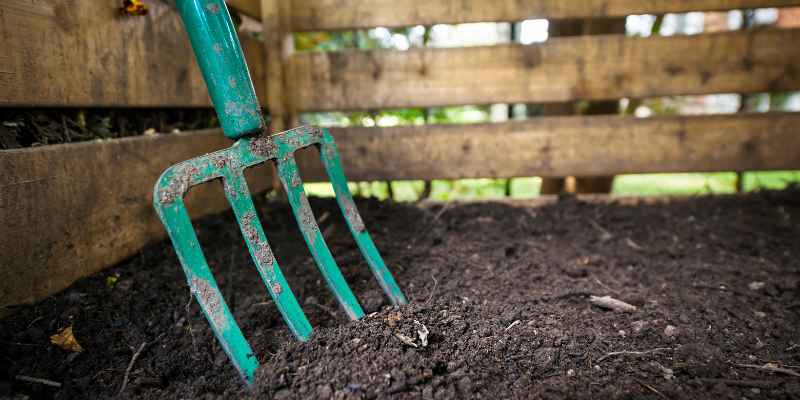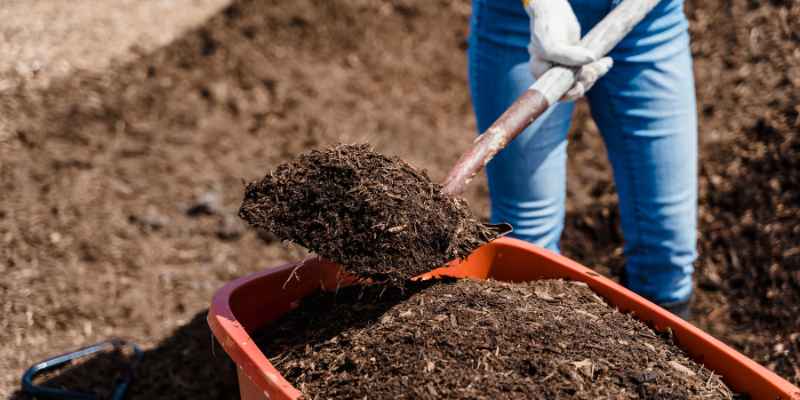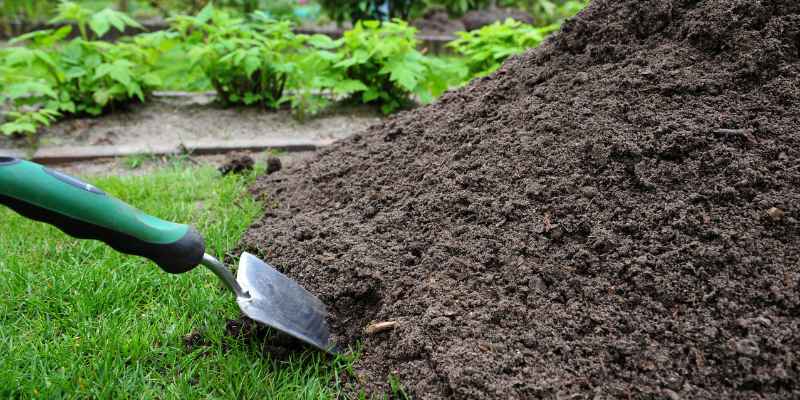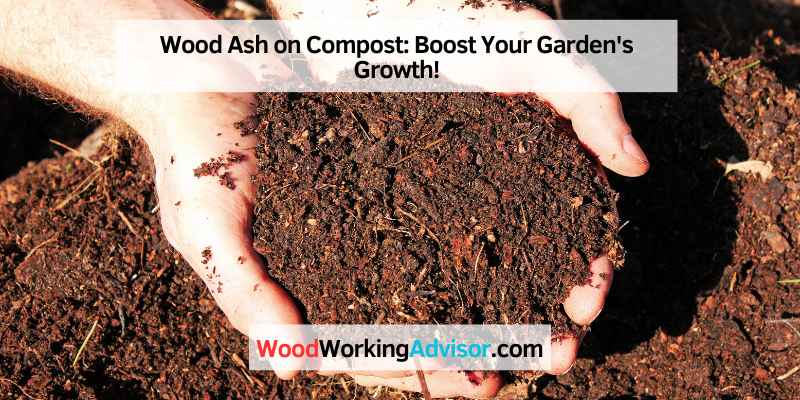Wood ash can be a beneficial addition to compost, providing essential nutrients and helping to balance the pH level. Its high potassium content can promote flowering and fruiting in plants.
When it comes to creating nutrient-rich compost, wood ash can be a valuable ally. This natural byproduct of wood fires contains essential minerals that can enhance the quality of your compost. By understanding how to properly incorporate wood ash into your composting process, you can harness its benefits for healthier and more productive plants in your garden.
In this blog post, we will explore the advantages of using wood ash in compost, the potential drawbacks to be aware of, and the best practices for incorporating it into your composting routine. Whether you’re a seasoned composter or just getting started, this information will help you make the most of this natural resource.
The Secret Ingredient: Wood Ash
Wood ash is the secret ingredient that can supercharge your compost and help your garden thrive. This often-overlooked material is a valuable resource that can enhance the quality of your compost, providing essential nutrients for your plants and soil. Understanding the benefits and components of wood ash can revolutionize the way you approach composting.
Why Wood Ash?
Wood ash is a valuable addition to compost due to its rich nutrient content and alkaline properties. When incorporated into compost, it helps balance the pH level, neutralizing acidity and creating a more favorable environment for beneficial microorganisms. Additionally, wood ash contains essential minerals like potassium, calcium, and magnesium, which are vital for plant growth and overall soil health.
Key Components In Wood Ash
- Potassium: Promotes flower and fruit development
- Calcium: Essential for strong cell structure in plants
- Magnesium: A key component of chlorophyll, crucial for photosynthesis
- Alkaline Properties: Helps counteract soil acidity
Benefits Of Adding Wood Ash To Your Compost
Wood ash can significantly improve the quality of your compost, offering various benefits that enhance soil health and plant growth. By incorporating wood ash into your composting process, you can take advantage of its valuable properties to nourish your garden naturally.
Enhanced Soil Nutrition
Wood ash is a rich source of essential nutrients like potassium, calcium, and magnesium, which are vital for plant growth.
Pest Control Naturally
The alkaline properties of wood ash help deter pests like slugs and snails, creating a natural barrier to protect your plants.
Ph Level Management
Wood ash can help balance the pH levels in your soil, making it more suitable for a wide range of plants to thrive.
How To Collect And Store Wood Ash Safely

To collect and store wood ash safely for compost, ensure it is cool and dry before adding to the pile. Mix ash evenly with compost materials to prevent clumping and aid decomposition. Store ash in a secure, dry container away from moisture to preserve its quality.
Wood ash is a valuable addition to compost piles as it contains essential nutrients that plants need. However, collecting and storing wood ash can be dangerous if not done properly. In this section, we will discuss some tips for collecting wood ash and safe storage practices.
Collection Tips
When collecting wood ash, it is important to follow these tips to ensure your safety and the safety of those around you:
- Use only hardwoods such as oak, maple, or hickory for burning as they produce the best quality ash.
- Allow the wood to burn completely and turn to ash before removing it from the fireplace or stove.
- Use a metal scoop or shovel to collect the ash, avoiding plastic or other flammable materials.
- Wear gloves and a dust mask to protect your skin and lungs from the fine particles in the ash.
- Wait at least three days before adding the wood ash to your compost pile to allow the ash to cool completely.
Safe Storage Practices
Storing wood ash safely is critical to prevent accidental fires. Here are some practices to follow when storing wood ash:
| Do’s | Don’ts |
|---|---|
|
|
By following these collection tips and safe storage practices, you can safely and effectively use wood ash in your compost pile. Remember to always prioritize safety and use caution when handling wood ash.
Integrating Wood Ash Into Your Composting Routine
When To Add Wood Ash
You can add wood ash to your compost pile throughout the year. Avoid adding it while the compost pile is actively breaking down organic matter, as this can disrupt the microbial activity. Instead, sprinkle wood ash when adding new layers of organic materials, such as kitchen scraps, yard waste, or grass clippings. This allows the wood ash to gradually integrate with the composting materials without causing any imbalance.
How Much Is Just Right?
When incorporating wood ash into your compost, use it sparingly. A general rule of thumb is to aim for a ratio of about 5% wood ash to 95% organic materials. Too much wood ash can elevate the pH level of your compost, which may negatively impact the decomposition process and the quality of the finished compost. To avoid overdoing it, sprinkle a thin layer of wood ash each time you add new organic materials to the compost pile. It’s always best to err on the side of caution and start with a small amount, gradually increasing as needed based on the size and acidity of your compost pile.
Potential Drawbacks To Be Aware Of
While wood ash can be a valuable addition to your compost pile, it’s important to be aware of potential drawbacks that may arise. By understanding these drawbacks and taking necessary precautions, you can ensure the success of your composting efforts.
Avoiding Overuse
Using wood ash in moderation is key to avoiding overuse. While it provides beneficial nutrients like potassium, excessive amounts can disrupt the balance of your compost. Aim to incorporate wood ash in small quantities, preferably no more than 10% of your overall compost mix.
| Compost Pile Size | Recommended Wood Ash Quantity |
|---|---|
| Small (1 cubic yard) | 1-2 cups |
| Medium (2-3 cubic yards) | 2-4 cups |
| Large (4+ cubic yards) | 4-6 cups |
Plants That Dislike Ash
While wood ash benefits many plants, there are some that dislike its high alkalinity. Avoid using wood ash in compost that will be used for acid-loving plants such as blueberries, rhododendrons, and azaleas. These plants thrive in acidic soil conditions, and wood ash can raise the pH levels, potentially harming their growth.
- Plants that dislike wood ash:
- Blueberries
- Rhododendrons
- Azaleas
By being mindful of these potential drawbacks and following the recommended guidelines, you can utilize wood ash effectively in your composting routine while avoiding any adverse effects on your plants.
Wood Ash Beyond The Compost: Other Garden Uses

Wood ash is a useful addition to compost, as it adds essential minerals and raises the pH level. However, it can also be used in other areas of the garden, such as a pest deterrent, a soil amendment for alkaline-loving plants, or as a traction aid on icy paths.
Wood ash is a byproduct of burning wood in fireplaces, stoves, or outdoor fire pits. It’s a common practice to add wood ash to compost piles as a source of nutrients for plants. However, the benefits of wood ash go beyond just composting. In this section, we’ll explore other garden uses of wood ash, including its effectiveness as a liming agent and its ability to deter slugs and snails from damaging plants.
As A Liming Agent
Wood ash contains calcium carbonate, which makes it an excellent liming agent for acidic soils. Liming is the process of adding substances like wood ash to soil to reduce its acidity and increase its pH level. When soil is too acidic, it can affect the availability of nutrients to plants and hinder their growth. By adding wood ash to soil, you can adjust its pH level and create a more hospitable environment for plants to thrive.
Deterring Slugs And Snails
Slugs and snails are common pests that can cause significant damage to plants in the garden. However, wood ash can be an effective deterrent against these pests. Sprinkling a layer of wood ash around plants can create an abrasive barrier that slugs and snails are less likely to cross. Additionally, the alkaline properties of wood ash can irritate the pests’ mucus membranes and discourage them from feeding on plants.
In conclusion, wood ash is not just a valuable addition to compost piles, but it can also be used as a liming agent and a natural pest control solution in the garden. By utilizing wood ash in these ways, gardeners can improve soil quality, prevent damage to plants, and ultimately promote healthier, more abundant crops.
Success Stories: Real Gardeners’ Experiences
Real gardeners share their success stories with using wood ash on compost. Discover their experiences and learn how this natural ingredient can enhance your composting process.
Case Study Highlights
Wood ash can significantly enhance compost quality.
Gardeners have seen remarkable improvements using wood ash.
Adding wood ash can balance soil pH levels effectively.
Before And After Comparisons
Before: Compost lacking nutrients, After: Nutrient-rich compost.
Before: Soil pH imbalance, After: Balanced soil pH levels.
Before: Slow decomposition, After: Faster compost breakdown.
Real gardeners share their wood ash compost success stories.
One gardener noted healthier, more vibrant plants.
Another gardener observed quicker decomposition and richer soil.
Wood ash transformed a struggling garden into a thriving oasis.
These stories highlight the transformative power of wood ash.

Frequently Asked Questions
Can I Use Wood Ash On Compost?
Yes, wood ash can be used on compost. It adds essential nutrients like potassium and calcium to the soil, helping plants grow healthier. However, it should be used sparingly as too much ash can raise the pH level of the soil, making it less suitable for some plants.
How Should I Apply Wood Ash To Compost?
To apply wood ash to compost, sprinkle a thin layer over the organic matter. Mix it in gently to ensure even distribution. Avoid applying large amounts at once, as this can disrupt the balance of nutrients in the compost pile.
Regularly turning the compost will help incorporate the ash effectively.
Are There Any Plants That Benefit From Wood Ash?
Yes, wood ash can benefit certain plants. It is particularly helpful for plants that prefer alkaline soil, such as tomatoes, lilacs, and roses. The nutrients in wood ash can promote healthy growth and enhance flowering. However, it is important to conduct a soil test to determine if your garden soil needs the additional alkalinity that wood ash provides.
Can Wood Ash Be Harmful To Plants?
While wood ash is generally beneficial, excessive use can be harmful to plants. Too much ash can raise the pH level of the soil, making it too alkaline for some plants. It is important to use wood ash in moderation and conduct a soil test to ensure the soil pH remains within the optimal range for your plants.
Conclusion
Incorporating wood ash into your compost enriches soil, boosts nutrient levels, and aids plant growth. Remember to use it sparingly to avoid altering pH levels drastically. Experiment with small amounts first and observe your garden’s response. Harness the benefits of wood ash wisely for a flourishing garden.

